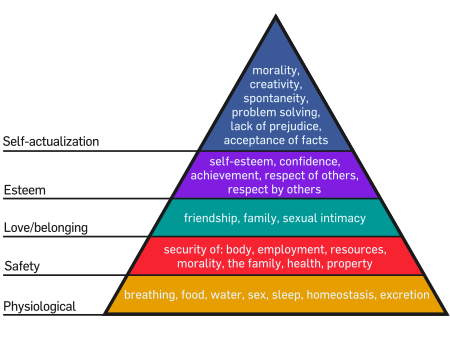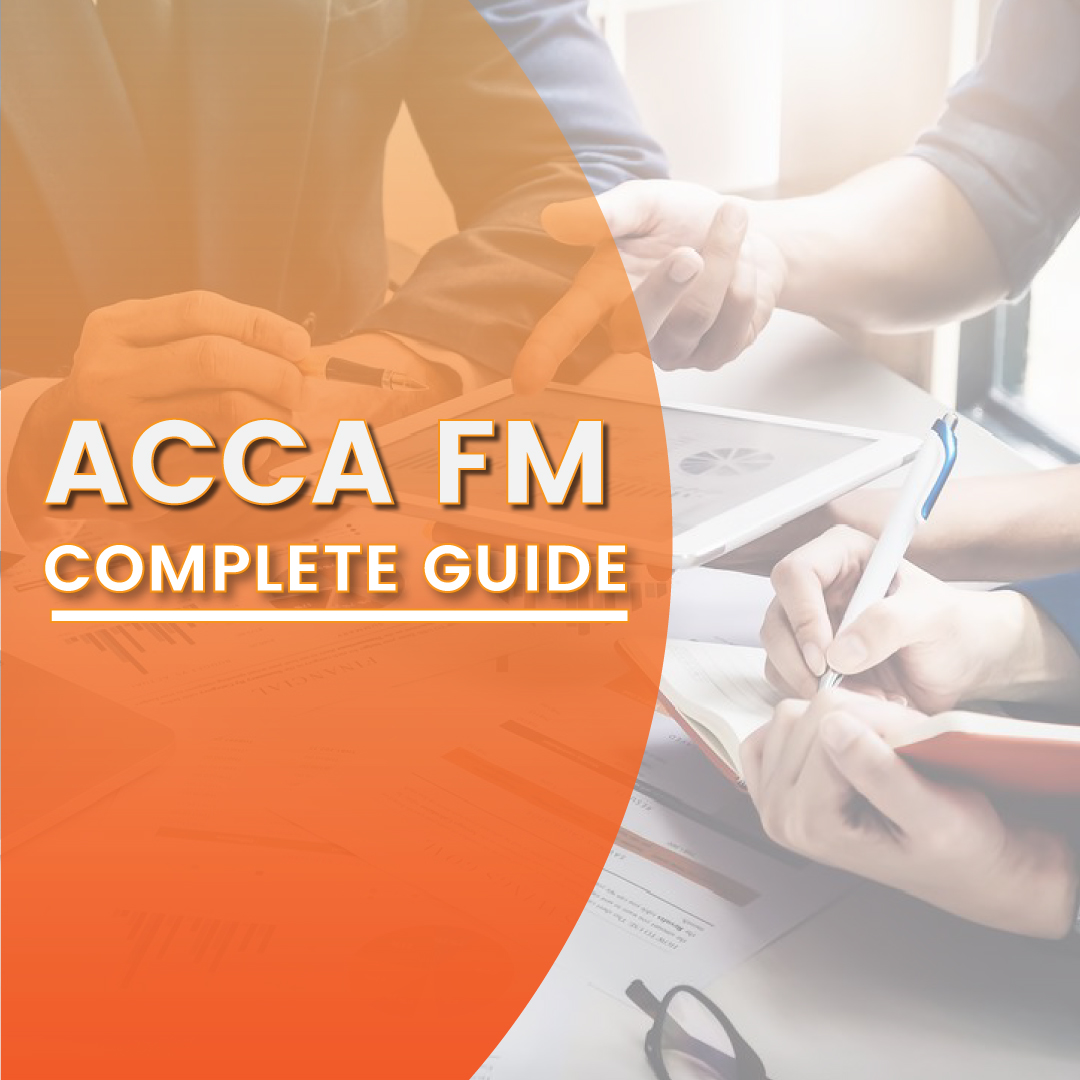The Secrets To Motivation In The Corporate World- A Brief Concept from ACCA F1 Syllabus
In the fast and aggressive business world, motivation plays a vital part in the success of each person and organization. Many managers and company owners face this difficulty with their employees or workers being demotivated most of the time, but everyone needs to understand that motivation can be achieved by just some little efforts, these efforts can be done by the managers to motivate their workers to work harder, longer and faster.
ACCA in Pakistan has been a sudden boost among the youth and many are pursuing ACCA, so if you want to get in line, then contact MI, you won’t get better tutoring and packages anywhere else.
This article by Mirchawala’s Hub Of Accountancy talks about the understanding of motivation, the secrets to achieving it, and The most essential part is that this article is going to be very helpful for the students studying BT/F1 Accountant In Business as they have a whole chapter on motivation in their syllabus, so keep on reading cuz this one’s very useful.
Before beginning with this topic of ACCA F1 Syllabus, we first need to properly understand what motivation actually is.
The Concept And Understanding Of Motivation-Acca F1 Syllabus
Motivation, a part of ACCA F1 syllabus, is that intangible force that propels us to take action, persist in our endeavors, and reap our goals, is frequently considered the elusive elixir of success in the corporate world. In the labyrinthine corridors of the human psyche, the place desires and ambitions motivation takes shape, fueling our aspirations and directing our efforts. It is a pressure that can radically change the every day into the extraordinary, and the unbelievable into the achievable.
To clearly draw close to the essence of motivation, one needs to navigate the problematic pathways of human psychology and behavior. It is now not simply a count of dangling carrots in the front of personnel or presenting monetary incentives; motivation delves deeper into the core of what drives individuals. In the context of ACCA F1 syllabus or this course, which gives a complete grasp of motivation inside the company sphere, we unearth the multifaceted factors that outline this phenomenon.
Motivation is now not a one-size-fits-all thinking but a nuanced interaction of inside and exterior factors. It is the artwork of aligning private ambitions with organizational goals, the ability to grant autonomy and responsibility, the act of bestowing cognizance and rewards, the dedication to fostering expert growth, and the advent of harmonious work surroundings the place where positivity flourishes. It is setting clear expectations, imparting nice feedback, and adapting methods to cater to quite a number of desires of individuals. In essence, motivation is the symphony of leadership, psychology, and human connection, carried out with finesse. Hopefully, you get better understanding of the motivation mentioned in the ACCA F1 syllabus.
As we embark on this ride to unravel the secrets and techniques of motivation, we step into a world the place the intangible turns into tangible, the complicated turns into clear, and the regular will become extraordinary. Learning about motivation is now no longer without a doubt about deciphering human behavior; it is about unlocking the internal pressure that propels us nearer to excellence in the commercial enterprise world and beyond.
Owais Mirchawala who taught various course like ACCA F1 is an experienced ACCA faculty who teach the complete ACCA F1 syllabus through online classes as well as in physcial. If you are think you need professionals guidance to get in-depth knowledge of this subject, you can think of joining Mirchawala’s.
Defining The Secrets To Achieving Motivation
There are some secrets to achieving this force of motivation and we’ll discuss them in this article right here, Below, is the first secret unveiled for you;
Secret 1: Aligning Personal and Organizational Goals
In the tricky tapestry of motivation inside the corporate world, the first thread we unravel is the idea of aligning private and organizational goals. It is a necessary secret that is regularly not noted however quintessential for constructing an influenced group and using the success of any organization.
The significance of this alignment is emphasized in ACCA’s F1(Business and Technology) course, which highlights the magnitude of personnel discovering a sturdy connection between their non-public dreams and the universal mission and values of the company. When this alignment is achieved, motivation thrives.
At the heart of this secret lies the concept of purpose ACCA F1 Syllabus highlights the importance of aligning personal goals with the overall mission and values of a company. It emphasizes that when people locate a clear connection between their personal aspirations and the broader desires of the organization, motivation grows and prospers.
At its essence, this secret revolves around the concept of purpose. Humans are naturally pushed by means of an experience of purpose; we are looking for that means in our movements and attempt for dreams that resonate with our values and aspirations. When personnel sense that their work at once contributes to the overarching dreams of the organization, they are extra probably to be motivated, engaged, and passionate about their roles. This alignment transforms work from being a mere capability to a paycheck into a pleasurable experience toward a shared vision.
How can agencies release this secret to motivation effectively? Here are some key strategies:
- Clear Communication of Purpose: Organizations should talk about their mission, values, and long-term goals transparently. This includes articulating not solely what the employer does but also why it does it. When personnel apprehend the ‘why,’ they can join their private aspirations to a higher purpose.
- Involvement in Goal Setting: Actively contain personnel in the goal-setting process. When folks have a say in defining their personal targets inside the framework of the company’s goals, they experience a feeling of possession and responsibility. This feeling of ownership, in turn, drives motivation.
- Regular Updates and Progress Tracking/Monitoring: Keeping personnel knowledgeable about the growth toward attaining organizational dreams is crucial. It creates a sense of shared obligation and helps human beings see the have an effect on their contributions.
- ⦁Recognition of Alignment: Celebrate cases the place employees’ non-public and expert desires align with the company’s mission. Publicly acknowledging and beneficial such alignment reinforces the significance of this connection.
- Training and Development: Provide possibilities for talent improvement and professional increase that align with employees’ long-term aspirations. When persons see a clear course for private improvement inside the organization, they are greater probably to continue to be influenced and committed.
- Flexibility and Adaptability: Recognize that private dreams and situations can also evolve over time. Encourage open speech and flexibility in accommodating changes, making sure that alignment stays intact.
Secret 2: Providing Autonomy and Responsibility
In the complex dance of motivation inside the company realm, the 2nd secret we unravel is the artwork of imparting autonomy and responsibility. ACCA’s F1 course acknowledges that empowerment is a fantastic motivator, and when individuals are entrusted with autonomy and responsibility, it can be the catalyst for unlocking their full potential.
Autonomy, in this context, refers to the diploma of independence and self-governance that personnel have in performing their duties and making choices related to their work. Responsibility, on the other hand, pertains to the possession and accountability that people sense for the consequences of their actions. When these two factors are skillfully interwoven, they create a dynamic synergy that fuels motivation.
So, How Does This Secret To Motivation Occur In Practice?
⦁ Encouraging Decision-Making: Empower personnel to make choices inside their areas of expertise. This now not only streamlines tactics but additionally offers humans an experience of possession over their work.
⦁ Setting Clear Objectives: Provide personnel with well-defined goals and then enable them the autonomy to decide how to obtain these goals. This strategy fosters creativity and innovation as people discover more than a few paths to success.
⦁ Trust and Support: Demonstrate faith in your team’s abilities. Show self-belief that they can cope with their duties effectively. Be on hand to furnish coaching and help when needed, however, keep away from micromanagement.
⦁ Accountability: Make folks responsible for their movements and outcomes. When personnel understand that their alternatives have actual consequences, they have a tendency to take their responsibilities larger seriously, which, in turn, boosts motivation.
⦁ Feedback and Recognition: Regularly grant comments on performance. Recognize and rejoice in situations the place autonomy and duty have led to effective results. Acknowledgment reinforces the significance of these attributes.
⦁ Learning from Mistakes: Encourage a lifestyle that places errors are considered as possibilities for increase as an alternative to failures. When personnel recognize that taking calculated dangers is acceptable, they are extra possibly to include autonomy with confidence.
⦁ Development Opportunities: Offer possibilities for talent improvement and professional development based totally on the obligations persons assume. The prospect of non-public and expert increase can be an effective motivator.
Secret 3: Recognizing and Rewarding Achievement
ACCA’s F1 course emphasizes the significance of acknowledging and celebrating employees’ achievements.
When mates collect interest and rewards for their contributions, it not only validates their efforts but also reinforces their motivation to proceed to operate at their best. Effective implementation of this secret involves;
⦁ Timely Recognition: Acknowledge achievements promptly. Delayed focus can scale down its impact. Recognizing each small and great accomplishment maintains motivation constantly high.
⦁ Customized Rewards: Tailor rewards to healthy the magnitude of the achievement. Personalized incentives expose that the company values and is acquainted with the efforts of its employees.
⦁ Public Recognition: Publicly rewarded and well-known achievements on every occasion possible. This no longer solely boosts the recipient’s morale but also evokes others to try for excellence.
⦁ Feedback Loop: Use awareness as a chance for optimistic feedback. Discuss what led to the success and how it aligns with the company’s goals, merchandising a deeper trip of purpose.
Secret 4: Setting Clear Expectations and Providing Feedback
Clarity is key to motivation. ACCA’s F1 course emphasizes the significance of setting clear expectations and presenting positive feedback. When personnel recognize what is expected of them and obtain comments on their performance, they are highly geared up to remain inspired and make fundamental improvements.
Strategies for placing clear expectations and imparting remarks include
⦁ Detailed Job Descriptions: Ensure that job roles and duties are actually defined. It’s critical that staff members understand their roles within the company and how they contribute to its success.
⦁ Regular Performance Reviews: Conduct everyday overall performance critiques the place personnel can acquire comments on their strengths and areas for improvement. These reviews, moreover, supply chances to set new needs and expectations.
⦁ Constructive Feedback: Offer optimistic and precise feedback. Focus on each fantastic achievement and areas that want improvement, and grant practice on how personnel can progress.
⦁ Goal Setting: Collaborate with personnel to set clear and plausible goals. When men and women have an experience of reason and direction, their motivation is enhanced.
The Theories Of Motivation
Done with the Secrets, now we jump to some theories related to Motivation
⦁ Maslow’s Hierarchy of Needs
⦁ Herzberg’s Two-Factor Theory
⦁ Vroom’s Expectancy Theory
⦁ McGregor’s X and Y theory
These theories are divided into Content and Process Theories of Motivation, Content theories include Maslow’s Hierarchy and Herzberg’s Two-Factor Theory, while on the other hand Process theory includes Vroom’s Expectancy Theory.
What are Content and Process theories of Motivation?
Content Theories:
Content theories of motivation, like Maslow’s Hierarchy of Needs and Herzberg’s Two-Factor Theory, discover what drives human motivation by means of figuring out unique wishes or elements that people are seeking to fulfill. The focal point is on intrinsic wishes and exterior rewards as key motivators.
Mirchawala Hub Of Accountancy offers a wide array of ACCA and other financial course, you can think of joining the institute if you are looking for an academic guidance for your career path.
⦁ Maslow’s Hierarchy of Needs
Abraham Maslow’s Hierarchy of Needs is a generic content material idea of motivation that posits that human wishes can be categorized into a hierarchical structure. This tells that humans first try to fulfill their lower needs and then go towards the higher ones.

⦁ Physiological Needs:
At the base of the hierarchy are physiological needs, which include food, water, shelter, and sleep. These are the most essential necessities for survival. When these desires are unmet, they turn out to be effective motivators, as people are mainly targeted to enjoy them.
⦁ Safety Needs:
Once physiological wishes are fairly fulfilled, persons are seeking protection and security. This consists of non-public safety, monetary stability, health, and job security. The absence of protection can create nervousness and avoid motivation.
⦁ Love and Belongingness Needs:
As persons cross the hierarchy, they are searching for social connections, love, and a feeling of belonging. This includes relationships, friendships, family, and a want-to-be phase of a neighborhood or group.
⦁ Esteem Needs:
The subsequent degree contains esteem needs, each vanity (feeling valued and respected) and the esteem of others (recognition and admiration from others). Fulfillment of these wants brings self-confidence and a feeling of accomplishment.
⦁ Self-Actualization Needs:
At the pinnacle of the hierarchy are self-actualization needs, representing the pursuit of one’s full potential, creativity, private growth, and self-fulfillment. Individuals encouraged with the aid of self-actualization are pushed to attain their best aspirations.
Maslow’s idea implies that as lower-level wishes are satisfied, higher-level desires grow to be greater influential motivators. However, people might also pass up and down the hierarchy depending on occasions and lifestyle changes. Organizations can use Maslow’s Hierarchy of Needs to apprehend worker motivation and graph strategies that align with these needs, growing a place of job conducive to increase and fulfillment.
⦁ Herzberg’s Two-Factor Theory
Frederick Herzberg’s Two-Factor Theory, frequently referred to as the Motivation-Hygiene or Dual-Factor Theory focuses on the place of job motivation and job satisfaction. Herzberg proposed that there are two awesome units of elements influencing worker attitudes and behavior.
Hygiene Factors (Dissatisfiers): These elements relate to the work environment best and tackle primary job needs. When absent or inadequate, they lead to dissatisfaction, however, when present, they stop dissatisfaction except by always motivating. Hygiene elements consist of job security, working conditions, salary, employer policies, and interpersonal relationships. Improving these elements only prevents dissatisfaction; it does not create motivation.
Motivators (Satisfiers): Motivational elements are those that motivate employees to operate at their first rate and derive job satisfaction. They are tied to the nature of the work itself and private growth. Motivators consist of achievement, recognition, the work itself, responsibility, and development opportunities. These elements stimulate enthusiasm, creativity, and intrinsic motivation.
Herzberg’s idea suggests that job pride and dissatisfaction are now not two ends of a single continuum but instead two separate dimensions. To inspire personnel effectively, corporations ought to focal point on bettering motivational factors, not simply enhancing hygiene factors. Job enrichment, possibilities for advancement, and significant work assignments can contribute to job pride and greater motivation levels, in accordance with Herzberg’s perspective.
Process Theory
Process theories, such as Expectancy Theory, take a seem at how guys and girls make preferences and why they choose fine actions. Process theories discover the concept patterns and reasoning at the back of why human beings act in specific methods to fulfill their wishes or attain favored outcomes.
⦁ Vroom’s Expectancy Theory
According to Vroom’s Expectancy Theory, people are encouraged to perform in a high-quality manner if they anticipate that their actions will result in outstanding results. This idea facilities on three key components:
⦁ Expectancy (E1): This represents an individual’s trust that effort will lead to performance. A greater expectancy suggests a more suitable trust that effort will lead to preferred outcomes and growing motivation.
⦁ Instrumentality (E2): Instrumentality refers to the understanding that overall performance will be rewarded. It assesses the extent to which humans trust that proper overall performance will result in rewards or consequences they value. A greater instrumentality suggests that personnel consider that their overall performance will lead to applicable rewards.
⦁ Valence (V): Valence displays the fee or elegance of the rewards or outcomes. It is a measure of how an awful lot of men or women wish for the rewards or results related to performance. A tremendous valence suggests a sturdy wish for the predicted rewards.
Vroom’s Expectancy Theory introduces a formulation to calculate motivation:
Motivation (M) = E1 * E2 * V
In this formula:
⦁ Expectancy (E1) represents the perceived probability that effort will lead to performance.
⦁ Instrumentality (E2) signifies the perceived probability that overall performance will result in rewards.
⦁ Valence (V) signifies the splendor or cost connected to the predicted rewards.
According to Vroom, motivation is the product of these three factors. If any one of these elements is low (approaches zero), it can substantially scale back motivation. Therefore, to beautify motivation, groups must focal point on
- Growing expectancy (employees’ trust that effort leads to performance),
- Enhancing instrumentality (the grasp of performance-reward linkage),
- Supplying rewards that align with employees’ valence (personal preferences and desires).
Now, McGregor’s theory isn’t a part of content and process theories but we’ll define that too;
⦁ McGregor’s X and Y theory
Douglas McGregor’s Theory X and Theory Y are contrasting views on how managers identify and interact with employees. These theories provide instructions on specific managerial techniques and their implications for worker motivation and behavior.
Theory X:
⦁ Theory X displays a pessimistic view of human nature and assumes that persons inherently dislike work and will keep away from it every time possible.
⦁ Managers who subscribe to Theory X have a tendency to consider that personnel should be carefully controlled, coerced, directed, and even threatened with punishment to make sure they meet organizational goals.
⦁ They pick out most personnel as missing ambition, responsibility, and self-motivation, and they trust that men and women especially searching for safety and are prompted by means of economic rewards.
⦁ Theory X administration tends to be authoritarian, and hierarchical and depends closely on exterior controls.
Theory Y:
⦁ Theory Y offers a constructive view of human nature and suggests that work is an herbal and imperative section of existence for most people.
⦁ Managers who adhere to Theory Y trust that personnel are inherently motivated, responsible, and successful in self-direction.
⦁ They see work as a supply of non-public satisfaction, and they consider that personnel can be creative, innovative, and inclined to take delivery of responsibility.
⦁ Theory Y managers emphasize developing work surroundings that encourage worker participation, involvement, and empowerment, with a focal point on intrinsic motivation as an alternative to simply exterior rewards.
It’s essential to word that McGregor’s theories are not supposed to describe all managers however alternatively serve as contrasting viewpoints that spotlight exceptional methods of managing and motivating people. McGregor himself preferred Theory Y, believing that it leads to greater fantastic consequences for each personnel and agency by tapping into the full attainable of individuals. All of these theories are present in the ACCA in Pakistan course and you will need to learn about these properly, that’s why we laid some paragraphs about them here.
Conclusion
In the complicated and ever-evolving panorama of the company world, the secrets and techniques to motivation are multifaceted and quintessential for success. ACCA F1 syllabus or course, as well as more than a few motivational theories, illuminate key standards that force worker engagement and productivity. The trip to unlocking motivation is an ongoing manner that needs a deep appreciation of man’s or woman’s desires and a dedication to adaptability. By embracing these secrets, companies can embark on a transformative direction closer to motivated, inspired, and finally profitable personnel in the dynamic world of business. Here we complete the ACCA in Pakistan’s F1 chapter of motivation, For more content like this, stay tuned and contact us if you wish to know more about ACCA F1 syllabus or other course details.
Written by : Agha Zulfiqar – ACCA student from Mirchawala’s Hub of Accountancy












[…] The Secrets To Motivation In The Corporate World- A Brief Concept From ACCA F1 Syllabus […]
Comments are closed.